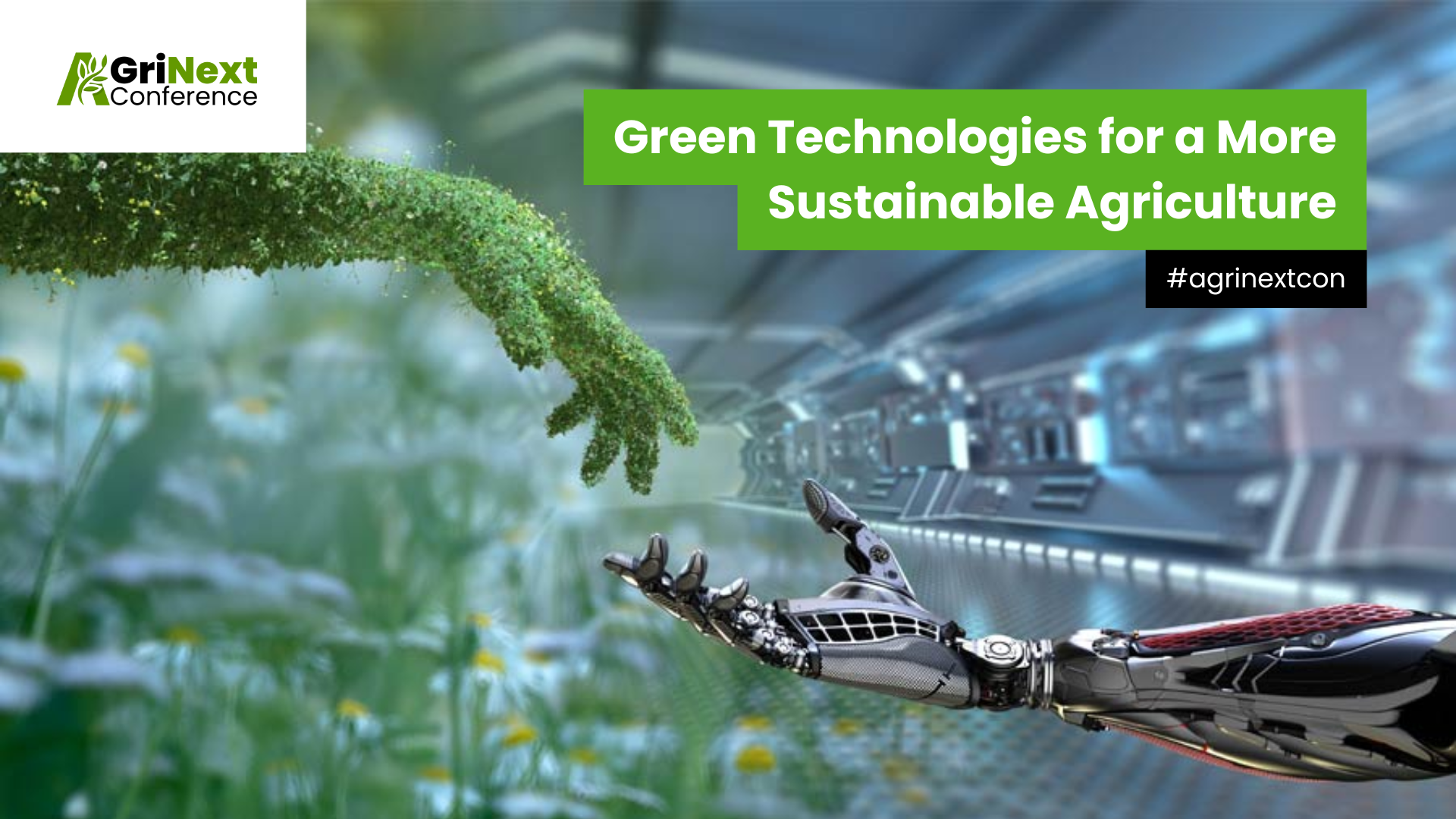
Discover how green technologies like precision agriculture, renewable energy, vertical farming, and blockchain are transforming sustainable agriculture. Explore innovations, policy momentum, and the role of AgriNext 2025 in driving global change.
Sustainable agriculture hinges on the ability to meet present food demands without compromising future generations’ ability to do the same. Achieving this goal requires not just technological innovation but also supportive policies, financial incentives, and coordinated global action.
Recent Policy Momentum
Recent policy reports on sustainable agriculture highlight strong efforts to integrate sustainability into farming systems and policymaking:
India’s National Mission for Sustainable Agriculture (NMSA) focuses on productivity, climate resilience, and farmer income through integrated programs supporting crop management, conservation, and Farmer Producer Organizations (FPOs). Annual budgets have grown steadily to reflect this commitment.
Reports by the Council on Energy, Environment, and Water (CEEW) recommend restructuring subsidies to reward conservation and ecosystem services, scaling up evidence-backed practices in low-resource and rainfed regions, and supporting individuals during the transition.
International alignment with SDG 2 – Zero Hunger underscores the global priority of investing in climate-smart agriculture, efficient food systems, and food security governance.
Recent government initiatives include the promotion of voluntary carbon markets and development of agricultural finance frameworks to mobilize green capital along agri-value chains.
Peer-reviewed policy analysis calls for integrating climate resilience into agricultural institutions and decision-making processes, strengthening adaptive capacity in the face of climate uncertainty.
Collectively, these efforts reinforce the importance of aligning sustainability incentives, supporting smallholders, and ensuring that policies drive innovation and resilience in agriculture.
With this policy groundwork in place, the next step is translating vision into practice — and that’s where green technologies come in.
Key Green Technologies and Innovations:
Precision Agriculture
Precision agriculture leverages GPS, drones, IoT sensors, satellite imaging, and data analytics to monitor crop fields in real-time. Farmers can manage field variability, optimize inputs such as water and fertilizers, and reduce waste and runoff—ensuring better yields with fewer resources.
Renewable Energy
Solar and wind-powered irrigation systems are reducing dependency on diesel engines and grid electricity, especially in rural areas. Biogas from agricultural waste is also being harnessed as a clean energy source, helping reduce carbon emissions from conventional energy use.
Integrated Pest Management (IPM)
IPM uses a combination of natural predators, crop rotation, resistant plant varieties, and minimal synthetic pesticide use. This approach minimizes environmental impact and delays the development of pest resistance.
Vertical & Urban Farming
Using hydroponics, aquaponics, and aeroponics, vertical farms grow crops in climate-controlled, soilless environments—often in urban areas. These systems reduce land use, water consumption, and transportation emissions (“food miles“).
Biofertilizers & Organic Inputs
Eco-friendly alternatives to chemical fertilizers, such as compost, green manure, nitrogen-fixing bacteria, and mycorrhizal fungi, enrich soil microbiomes. These practices boost long-term fertility and reduce pollution in nearby water bodies.
Water-Efficient Technologies
Drip irrigation and rainwater harvesting help conserve freshwater resources. These methods precisely deliver water to plant roots and capture scarce rainfall, especially valuable in arid and drought-prone regions.
Blockchain & Traceability Tech
Blockchain systems are increasingly being adopted to ensure transparency from farm to fork. This guarantees traceability, ethical sourcing, and better compliance with sustainable practices in global agricultural supply chains.
Barriers to Adoption
Despite their potential, these technologies face slow or uneven adoption due to high initial costs, limited awareness, technological illiteracy, infrastructure deficits, and policy challenges. Addressing these barriers requires coordinated efforts in education, accessibility, financing, and policy reform.
Conclusion: Toward AgriNext 2025
Green technologies are not just a vision for tomorrow – they are essential tools for today. As climate pressures intensify and natural resources become more strained, it’s vital that agri-tech solutions be scaled rapidly to deliver systemic change.
In this context, AgriNext 2025 stands as a landmark global platform accelerating the green transformation. The event will unite innovators, researchers, entrepreneurs, corporations, and policymakers to spotlight technologies such as climate-smart crop varieties, AI-based optimization, soil regeneration, and circular farm systems.
By enabling knowledge exchange, forging partnerships, and aligning investments and policies, AgriNext 2025 aims to turn sustainable agriculture into a global standard.
Signup For AgriNext Conference Newsletter

